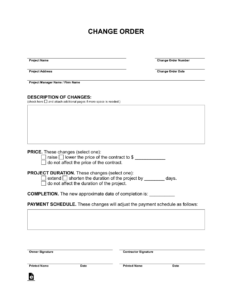Utilizing such a standardized form offers numerous advantages. It promotes efficiency by streamlining the request process, reducing ambiguity, and minimizing the potential for miscommunication. It empowers unions to access necessary information, fostering a more balanced power dynamic and enabling them to effectively represent their members. Furthermore, this transparent process can contribute to a more positive and collaborative labor-management relationship, built on trust and open communication.
Understanding the purpose and benefits of this formalized communication tool is paramount. The following sections will delve deeper into the key components of these forms, best practices for their utilization, legal considerations, and real-world examples of their application in various workplace scenarios.
Key Components of a Union Information Request Form
Effective information requests require specific elements to ensure clarity and completeness. These components facilitate efficient processing and increase the likelihood of a timely and comprehensive response from employers.
1. Clear Identification of the Requesting Party: The form should prominently display the union’s name, local number, and contact information. This allows the recipient to easily identify the source of the request and direct responses appropriately.
2. Date of the Request: Including the date establishes a clear timeline for the request and facilitates tracking and follow-up.
3. Specific and Detailed Description of the Information Sought: Ambiguity can lead to delays and incomplete responses. The request must clearly articulate the precise information required, including specific dates, locations, job titles, or any other relevant details.
4. Purpose of the Request: Explaining why the information is needed helps the employer understand the context and relevance of the request. This can contribute to a more cooperative response.
5. Legal Basis for the Request: Citing relevant legal provisions, contractual obligations, or past practices strengthens the request and demonstrates the union’s understanding of its rights and the employer’s obligations.
6. Desired Format for the Response: Specifying the preferred format (e.g., electronic spreadsheet, written document) simplifies the response process and ensures the data received is usable.
7. Deadline for Response: A reasonable timeframe for providing the information should be clearly stated. This allows for efficient processing and follow-up if a response is not received within the stipulated time.
8. Contact Information for Follow-up: Providing specific contact details for questions or clarifications streamlines communication and ensures a point of contact for any necessary follow-up.
These elements, when combined, create a comprehensive and effective request, facilitating the acquisition of necessary information for the union to fulfill its representational duties and protect workers’ rights. A well-crafted request increases efficiency, transparency, and accountability within the labor-management relationship.
How to Create a Union Information Request
Creating a well-structured information request is essential for unions seeking information from employers. A standardized approach ensures clarity, promotes efficiency, and facilitates effective communication. The following steps outline the process of developing a comprehensive request.
1: Identify the Requesting Party: Clearly state the union’s name, local number, and contact information. This ensures proper identification and routing of the request and any subsequent correspondence.
2: Date the Request: Accurately dating the request establishes a clear timeline and facilitates tracking.
3: Detail the Information Needed: Specify the precise information required. Vague requests often lead to incomplete or irrelevant responses. Include specific dates, employee names or job titles, locations, and any other pertinent details.
4: State the Purpose: Articulating the reason for the request provides context and demonstrates relevance. This can encourage timely and comprehensive cooperation.
5: Cite Legal Basis (if applicable): If the request is based on specific legal provisions, contractual obligations, or established past practices, these should be clearly referenced.
6: Specify the Desired Format: Indicate the preferred format for the response (e.g., electronic spreadsheet, written document). This simplifies compilation and analysis of the received data.
7: Establish a Deadline: A reasonable deadline should be included to encourage timely responses. This allows for effective follow-up if necessary.
8: Provide Contact Information for Follow-Up: Designate a specific contact person for questions or clarifications. This streamlines communication and ensures a clear point of contact for any necessary follow-up.
Following these steps ensures the creation of a comprehensive and effective information request, contributing to transparent communication and efficient information exchange between the union and employer. This process facilitates informed decision-making and promotes a more productive labor-management relationship.
Standardized forms for requesting information are indispensable tools for labor organizations. They provide a structured framework for obtaining crucial data from employers, promoting transparency and accountability in the workplace. Precise and well-defined requests facilitate efficient communication and contribute to more informed decision-making regarding contract negotiations, grievance procedures, and the protection of workers’ rights. A clear understanding of the components, creation process, and strategic utilization of these forms empowers unions to effectively advocate for their members and foster a more balanced labor-management relationship.
Effective utilization of these tools is crucial for navigating the complexities of labor relations. By embracing standardized procedures and promoting open communication, unions can contribute to a more equitable and productive work environment. Continued focus on refining these processes remains essential for advancing workers’ rights and fostering positive change in the evolving landscape of labor relations.
